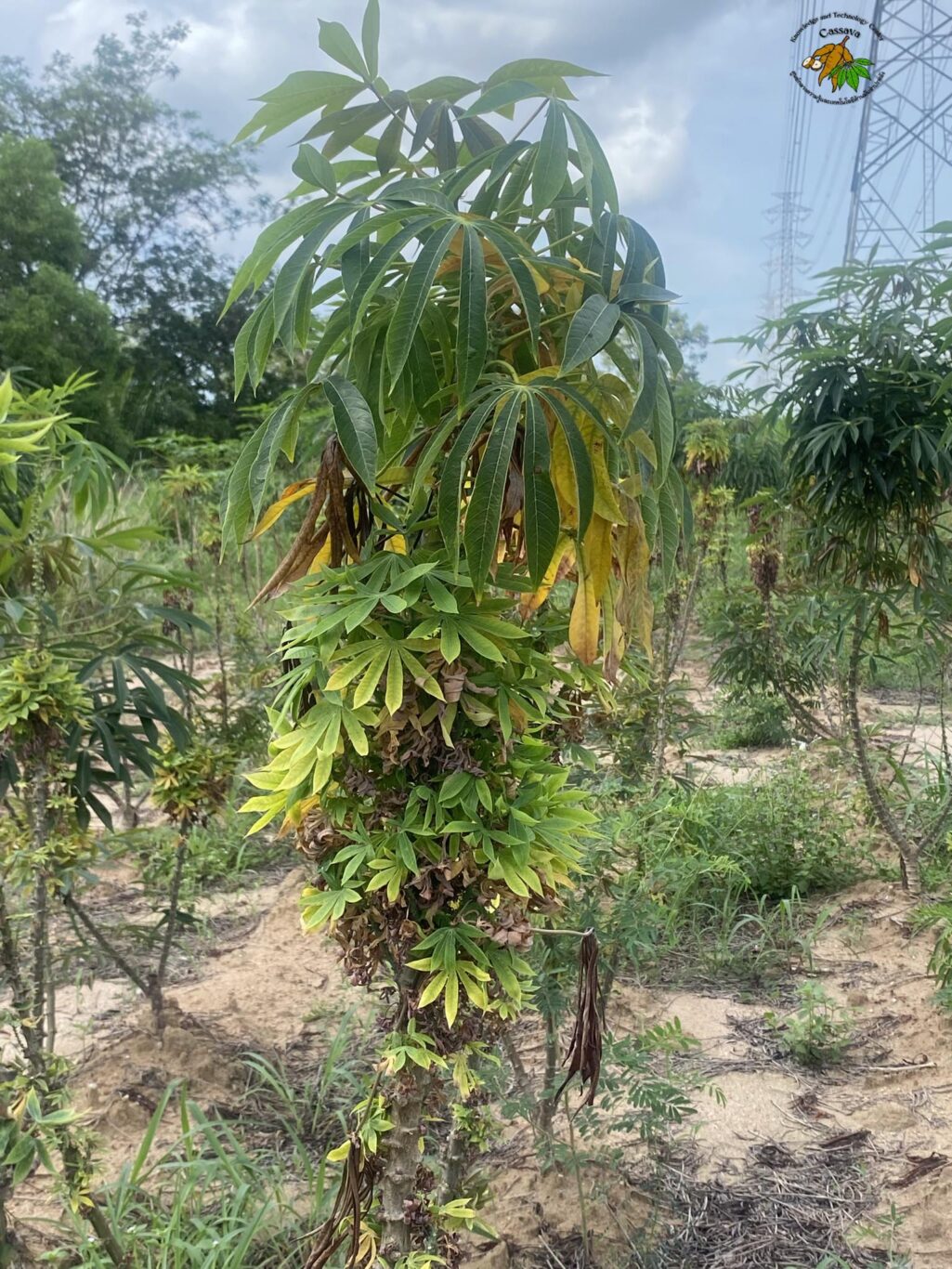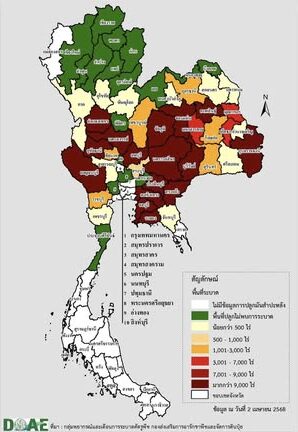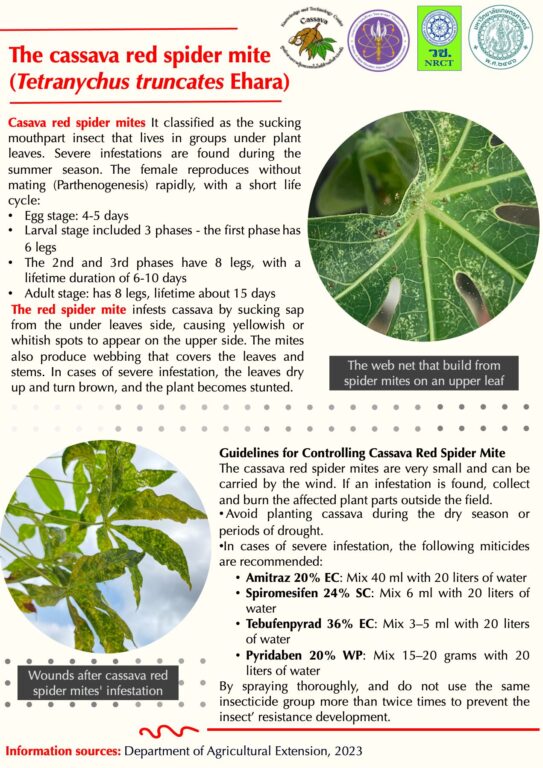
🔔📍 Officially entering into the Rainy Season: Cassava Witches’ Broom Disease was warned for Thai’s cassava farmer 📢
As we enter the early rainy season, in addition to root rot disease which commonly found during this time, otherwise Thai cassava farmers should be alert for the outbreak of Cassava Witches’ Broom Disease.
📌 The initial outbreak of this disease was reported in Rayong Province. Witches’ Broom Symptoms: this usually becomes clearly visible around 4–5 months after planting. Infected plants typically show stunted or dwarfed growth, shortened internodes, excessive branching resulting in a “broom-like” appearance, and yellow to pale-yellow leaves. These symptoms ultimately lead to reduced crop quality and lower starch content.
▶️ Early studies identified the cause of this disease as a phytoplasma. However, recent experiments and researches have confirmed that the primary pathogen causing Cassava Witches’ Broom Disease in Southeast Asia is the fungus Ceratobasidium theobromae. This is the same fungus responsible for vascular streak dieback in cacao plants.
This fungus attacks the plant’s water-conducting tissues, exhibiting symptoms similar to those caused by phytoplasma, that the vascular tissues turn dark brown to black in case of an infected cassava.
If cassava plants show signs of witches’ broom disease, the following management practices are recommended
1. Maintain the health of cassava plants by providing adequate water, fertilizers, and soil amendments to strengthen the plants.
2. Prune the infected parts, making sure to cut at least 30 centimeters beyond the visibly affected area to prevent the fungus from spreading further.
3. Using the hygiene cutting meterials or stems
Acknowledgements:
- Pardo, J.M., Gil-Ordóñez, A., Leiva, A.M., Enjelvin, L., Chourrot, A., Kime, S.C.K. et al. (2024) First report of cassava witches’ broom disease and Ceratobasidium theobromae in the Americas. New Disease Reports, 50, e70002. https://doi.org/10.1002/ndr2.70002
- Pardo, J.M.; Chittarath, K.; Vongphachanh, P.; Hang, L.T.; Oeurn, S.; Arinaitwe, W.; Rodriguez, R.; Sophearith, S.; Malik, A.I.; Cuellar, W.J. Cassava Witches’ Broom Disease in Southeast Asia: A Review of Its Distribution and Associated Symptoms. Plants 2023, 12, 2217. https://doi.org/10.3390/plants12112217
- Gil-Ordóñez, A., Pardo, J.M., Sheat, S. et al. Isolation, genome analysis and tissue localization of Ceratobasidium theobromae, a new encounter pathogen of cassava in Southeast Asia. Sci Rep 14, 18139 (2024). https://doi.org/10.1038/s41598-024-69061-8
- Leiva, A.M., Pardo, J.M., Arinaitwe, W. et al. Ceratobasidium sp. is associated with cassava witches’ broom disease, a re-emerging threat to cassava cultivation in Southeast Asia. Sci Rep 13, 22500 (2023). https://doi.org/10.1038/s41598-023-49735-5




